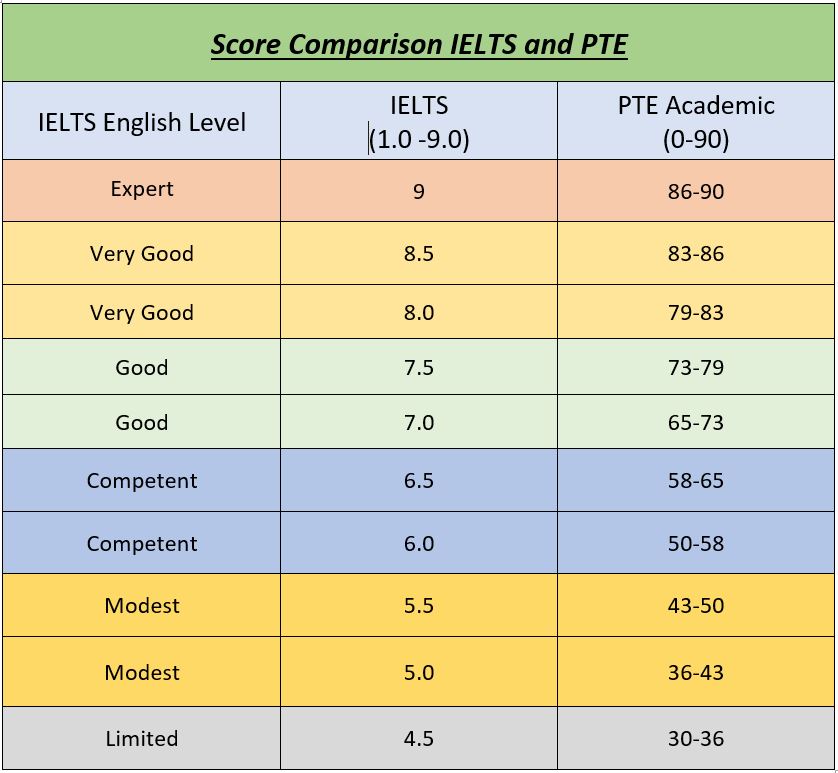Pte VS Ielts Score, When it comes to proving your English language proficiency for studying, working, or immigrating abroad, two of the most popular options are the PTE (Pearson Test of English) and IELTS (International English Language Testing System). Both are widely accepted around the world, but they differ in format, scoring, and even the skills they emphasize. If you’re trying to decide which test is right for you, understanding the PTE vs IELTS score comparison is a good place to start.
Understanding the Basics
IELTS is a paper-based or computer-based exam that assesses four key skills: Listening, Reading, Writing, and Speaking. It uses a band score system ranging from 1 (non-user) to 9 (expert user).
PTE, on the other hand, is a fully computer-based test. It also covers the same four skills but uses an automated scoring system, giving scores on a scale from 10 to 90.
PTE vs IELTS Score Comparison
Here’s a rough comparison of PTE vs IELTS scores to help you understand how they match up:
| PTE Academic Score | IELTS Band Score |
|---|---|
| 85 – 90 | 9.0 |
| 76 – 84 | 8.0 – 8.5 |
| 66 – 75 | 7.0 – 7.5 |
| 56 – 65 | 6.0 – 6.5 |
| 46 – 55 | 5.5 |
| 36 – 45 | 5.0 |
| 30 – 35 | 4.5 |
These are approximate equivalents, as scoring standards can vary slightly between institutions and countries. However, most universities and immigration offices accept this comparison.
Key Differences Between PTE and IELTS
- Test Format:
- IELTS: Human examiner for Speaking, more traditional.
- PTE: Entirely computer-based, including Speaking (recorded responses).
- Scoring Method:
- IELTS: Manual scoring by human examiners.
- PTE: Automated scoring system ensures faster and arguably more objective results.
- Result Time:
- IELTS: 5–7 days (computer-based), up to 13 days (paper-based).
- PTE: Usually within 2 business days.
- Test Availability:
- PTE is available in more frequent slots due to its digital nature.
- IELTS may have fewer dates, especially in certain regions.
Which Test Is Easier?
There’s no definitive answer, as it depends on your strengths and preferences. Some test-takers find the PTE easier because it’s fully digital and faster. Others prefer IELTS for the human interaction in the speaking section. If you’re more comfortable typing and dealing with a computer interface, PTE may be the better choice.
Conclusion
Choosing between the PTE and IELTS ultimately depends on your personal preferences, the requirements of your chosen institution, and where you’re applying. Understanding the PTE vs IELTS score comparison can guide your decision and help you set realistic score goals.
Whichever test you choose, preparation is key. Familiarize yourself with the test format, practice under real test conditions, and aim for the score that aligns with your goals.
You Might Also Like These:

